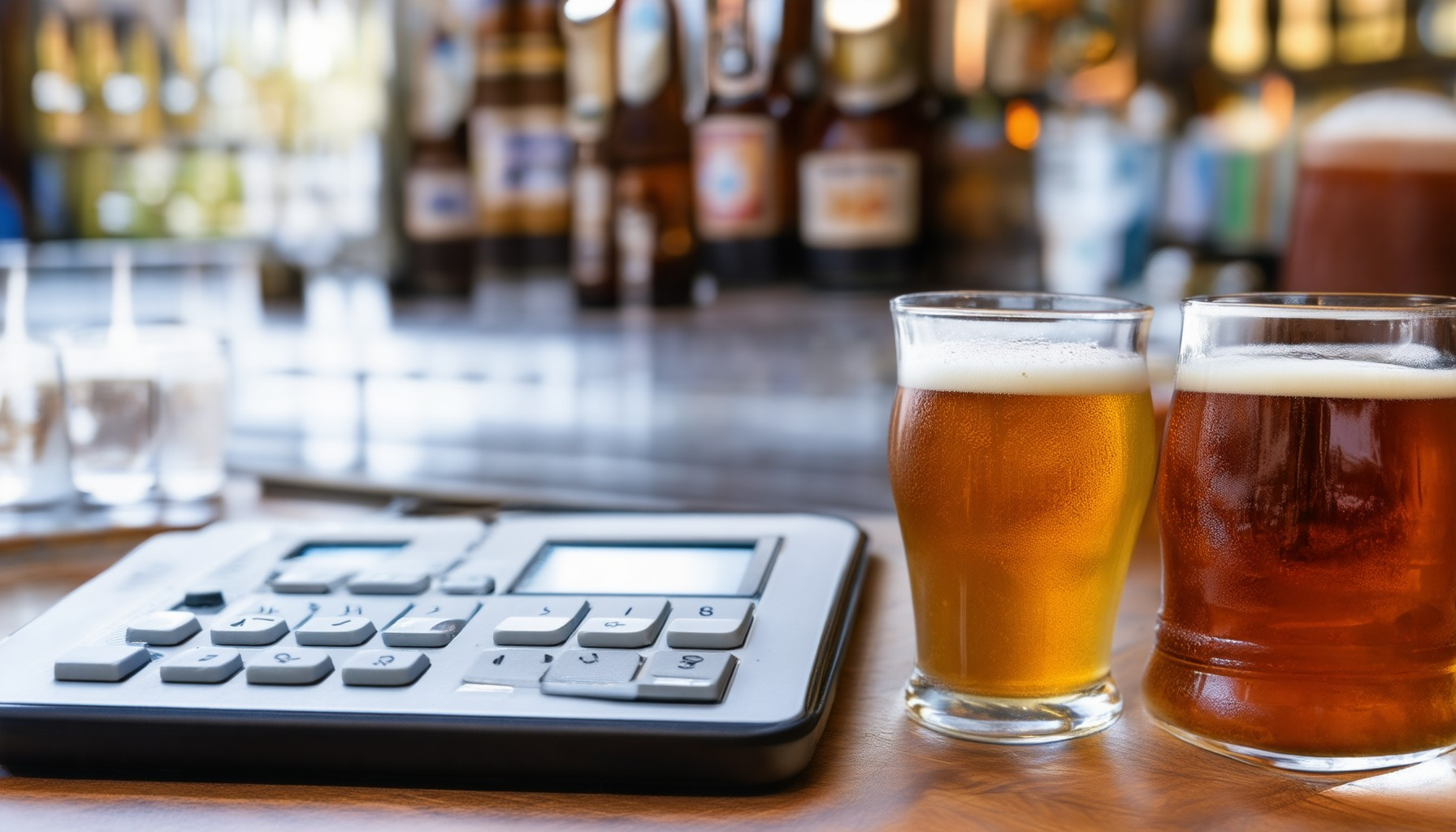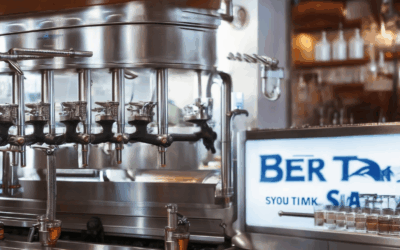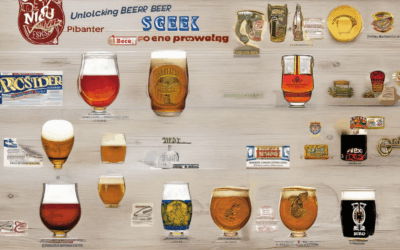The profitability of the beer industry remains a fascinating subject, particularly when examining the profit margins that drive breweries and bars. While many might wonder how high are craft beer profit margins, the reality is that these margins can vary significantly depending on factors like production scale, distribution channels, and market demand. From small craft breweries aiming to carve out a niche to large-scale manufacturers focusing on volume, each player in the beer market navigates a complex web of challenges and opportunities. This article delves into the intricacies of beer margins, exploring everything from the average profit margins in the industry to the strategies needed to maximize profitability. Whether you’re an aspiring brewer, an investor, or simply someone curious about the business side of beer, this exploration of beer margins offers valuable insights into the financial dynamics shaping one of the world’s most beloved beverages.
Key Takeaways
– Craft Beer Profit Margins Range from 10-25%: Breweries achieve profitability through optimized operations and strategic pricing.
– Efficient Sourcing Drives Cost Reduction: Reducing COGS and optimizing labor costs enhances brewery profitability.
– Larger Breweries Enjoy Higher Margins: Scale and efficient distribution networks contribute to 20-30%+ profit margins.
– Direct-to-Consumer Models Boost Profitability: Selling through taprooms or e-commerce increases margins and customer engagement.
– Brewery Owners See Varying Earnings: Salaries range from $50k to over $100k, influenced by location, business model, and experience.
– Investing in Craft Beer Can Be Lucrative: Strong demand and premium pricing potential support profitable ventures, despite initial costs.
– Strategic Planning and Innovation Drive Success: Sustainable practices, unique flavors, and efficient distribution are key to long-term profitability.

Profit Margins on Beer
The profit margins on beer can vary significantly depending on the type of beer, production scale, and distribution channel. Generally, the profit margin for beer production, including both manufacturing and distribution, tends to hover around 70-85% , though this can fluctuate based on market conditions and operational efficiency.
Key Factors Affecting Profit Margins
- Cost of Goods Sold (COGS):
- Ingredients, such as malt, hops, yeast, and water, are the primary cost drivers in beer production.
- Labor costs for brewers, packaging, and distribution also contribute to COGS.
- Energy and other production-related expenses further impact profitability.
- Distribution Channels:
- Draft Beer: Typically has lower margins due to higher volume sales and often lower pricing in restaurants and bars.
- Bottled/Canned Beer: Usually commands higher margins due to higher retail prices and lower volume sales.
- Craft Beer Impact:
- The rise of craft breweries has increased competition, leading to tighter margins for both established players and newer entrants.
- Smaller breweries often focus on premium pricing to maintain profitability despite higher production costs.
- Supply Chain Challenges:
- Rising costs of raw materials and transportation can squeeze profit margins.
- Sourcing reliable suppliers and optimizing logistics are critical for maintaining profitability.
- Regulatory Environment:
- Taxes, tariffs, and regulations can vary by region, impacting profitability.
- In some markets, government-mandated price controls or subsidies may also affect margins.
- Marketing and Branding:
- High advertising and promotional spending can eat into profit margins, particularly for well-known brands.
Profit Margins by Beer Type
- Mass-produced beers: Often have higher profit margins due to economies of scale and efficient production.
- Craft beers: Generally have lower profit margins compared to mass-produced beers but may command premium prices in certain markets.
Competitive Landscape
Large breweries often enjoy higher profit margins due to their ability to leverage economies of scale and extensive distribution networks. However, craft breweries are increasingly competing on quality and niche markets, which can pressure overall profit margins in the industry.
In summary, beer companies achieve varying profit margins based on their business model, production scale, and market positioning.
Profit Margin on a Beer Store
The profit margin for a beer store typically ranges from 20% to 30% of revenue. This means for every dollar of sales, the store keeps between 20 and 30 cents as profit after covering all expenses.
Factors Influencing Beer Store Profit Margins
- Cost of Goods Sold (COGS): Beer is a high-margin product, but wholesalers often negotiate better rates for larger volumes, impacting profitability.
- Rent and Utilities: Operational costs like rent, utilities, and labor contribute significantly to expenses.
- Inventory Costs: Carrying a variety of beers increases costs, but efficient inventory management can mitigate this.
- Licensing Fees: State and local fees for alcohol licenses can eat into profits.
- Competition: Retailers may offer discounts or promotions, affecting overall pricing strategy.
How to Maximize Profitability
- Sell Private Label Beers: These are cheaper to source and can significantly boost margins.
- Focus on High-Margin Products: Specialty or premium beers often command higher prices.
- Optimize Pricing Strategy: Balance competitive pricing with markup to maintain profit margins.
This structure ensures clarity and provides actionable insights, making the information both informative and engaging.

Is 7.5% High for Beer?
The alcohol by volume (ABV) of beer varies widely depending on the style, with most beers ranging between 4% and 10%. While 7.5% may seem high compared to many popular beers, it falls squarely within the middle ground of the spectrum:
- Average Beer ABV: Most beers, including lagers, ales, and wheat beers, typically have an ABV between 4% and 5%.
- Stronger Beers: Beers with higher ABVs like 6% to 10% are often considered “strong” or “high-strength” beers, commonly found in craft breweries and import markets.
- Extreme Beers: Craft beers push the boundaries with ABVs exceeding 15%, but these are rare and fall under specific styles like barleywine or imperial stout.
In summary, 7.5% ABV is relatively high for a standard beer but not extreme enough to be classified as a specialty or extreme beer.

Brewery Profit Overview
The average profit margin for breweries can vary significantly depending on factors such as production scale, pricing strategy, and operational efficiency. While exact figures may differ, many breweries aim to achieve a net profit margin between 10-25% annually.
Factors Influencing Brewery Profits
- Cost of Goods Sold (COGS): This includes ingredients, packaging, and production costs. Efficient sourcing and bulk purchasing can reduce COGS percentages.
- Labor and Distribution Costs: Staff wages and transportation expenses are major variables. Optimizing routes and cross-training staff can help manage these costs.
- Fixed vs. Variable Costs: Fixed costs (rent, utilities, equipment) remain constant, while variable costs (ingredients, marketing) fluctuate with demand.
- Overhead Expenses: Includes administrative costs, R&D, and branding efforts. Effective budgeting can help manage these without compromising profitability.
Examples of Brewery Profit Margins
- Small Craft Breweries: Often operate on lower profit margins (8-12%) due to higher production costs and limited distribution channels.
- Larger Production Brewers: Can achieve higher margins (20-30%) through economies of scale and efficient distribution networks.
- Specialty and Premium Brands: Command premium prices, allowing for higher profit margins (30-40%) due to niche market appeal.
Recent Trends in Brewery Profits
In recent years, breweries have increasingly focused on direct-to-consumer sales channels like e-commerce and subscription models to boost profitability. Additionally, investing in sustainable practices and innovative packaging has helped some brewers differentiate and capture higher margins.
Conclusion
Brewery profitability is influenced by a combination of operational efficiency, market positioning, and financial management. By optimizing production costs and leveraging strategic marketing, breweries can achieve sustainable profit margins and grow their businesses effectively.
How Much Do Brewery Owners Make?
Brewery owners typically earn an annual salary ranging from $50,000 to $100,000 or more. However, this figure can vary significantly based on several factors:
- Location and Brewery Size: Owners in urban areas or larger breweries often see higher earnings due to greater demand and operational scale.
- Business Model: Some owners choose to reinvest profits back into the business for expansion or modernization, reducing immediate personal income.
- Experience and Expertise: Established owners with a strong reputation and efficient operations may command higher salaries or profits.
Additionally, brewery profit margins are typically healthy, often ranging between 10% to 20% annually, depending on the market and operational efficiency. This profitability allows owners to invest in growth initiatives or take a portion of the profits as personal income.
Owners may also diversify their income streams through partnerships, consulting, or other ventures within the craft beer industry, further supplementing their earnings.

Is a Brewery a Good Investment?
Investing in a brewery can be a lucrative venture, but it requires careful consideration of several factors. Here’s a breakdown of the key aspects to evaluate:
Profitability Potential
- Breweries can indeed be profitable, often with margins ranging from 20% to 30% or more, depending on factors like production scale, distribution efficiency, and market demand.
- Craft beer continues to enjoy strong consumer demand, with annual sales growing steadily. This trend supports the viability of brewery investments.
- Direct-to-consumer sales, such as through taprooms or online platforms, can significantly boost profitability compared to traditional distribution models.
Market Demand and Trends
- The craft beer market is highly competitive, with established players like The Goods On Tap leading the way. However, there’s room for differentiation through unique flavors, sustainability practices, and innovative packaging.
- Consumer preferences are shifting toward premium and artisanal products, which can justify a premium pricing strategy for your brewery.
- Geographical location plays a crucial role. Proximity to urban centers or regions with high beer consumption rates can enhance profitability.
Operational Considerations
- Brewing operations require significant upfront investment in equipment, facilities, and licensing. Costs can range from $100,000 to over $500,000 depending on capacity and regulatory requirements.
- Labor costs, particularly for skilled brewers, can be a major expense. Recruitment and retention are critical challenges in the industry.
- Energy consumption and environmental regulations are also important considerations, as breweries are increasingly expected to adopt sustainable practices.
Distribution and Sales Channels
- Effective distribution networks are essential for reaching markets. Partnering with established distributors or building your own sales team can streamline access to retail outlets.
- Online sales and direct-to-consumer platforms like The Goods On Tap offer additional revenue streams, though they may require additional marketing investment.
- Building brand loyalty through community engagement, such as taproom events or partnerships with local businesses, can drive long-term success.
Financial Risks and Mitigation
- Market volatility, such as changes in consumer preferences or economic downturns, poses risks to brewery profitability.
- Diversification strategies, such as offering non-alcoholic beers or expanding product lines, can mitigate these risks.
- Strong financial planning and contingency funds are essential to navigate challenges like supply chain disruptions or regulatory changes.
Conclusion
Investing in a brewery can be rewarding, but it demands thorough research and strategic planning. Factors like location, market demand, operational efficiency, and distribution capabilities all play pivotal roles in determining success. By leveraging emerging trends and maintaining a focus on quality and innovation, you can position your brewery for long-term growth and profitability. For more insights, explore The Goods On Tap’s comprehensive brewery reviews and industry trends analysis.





0 Comments